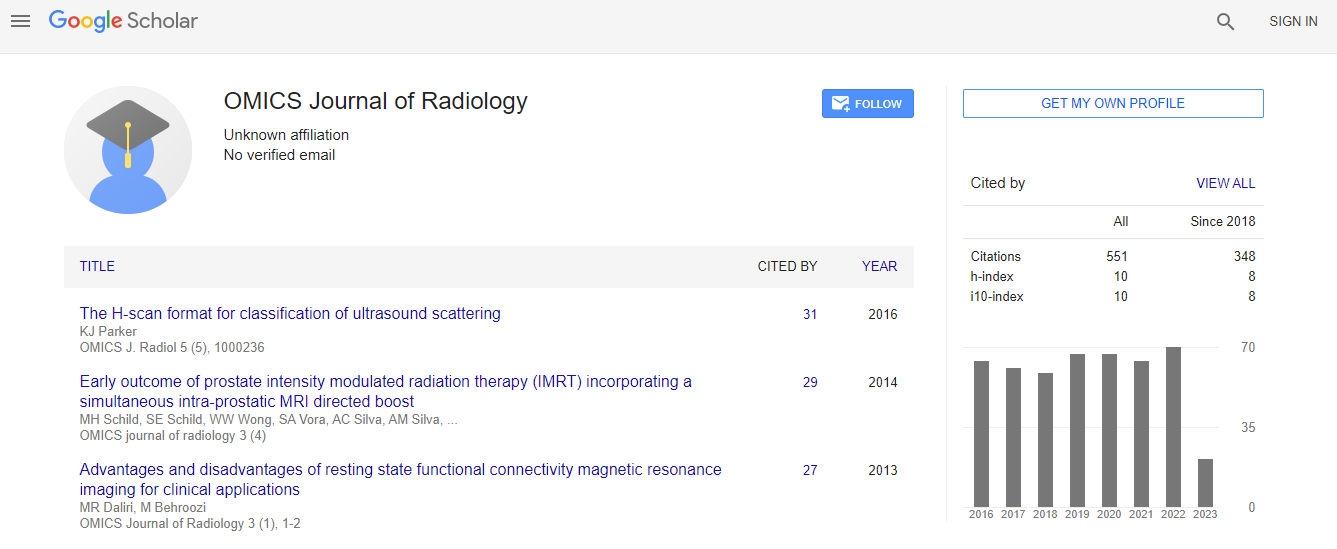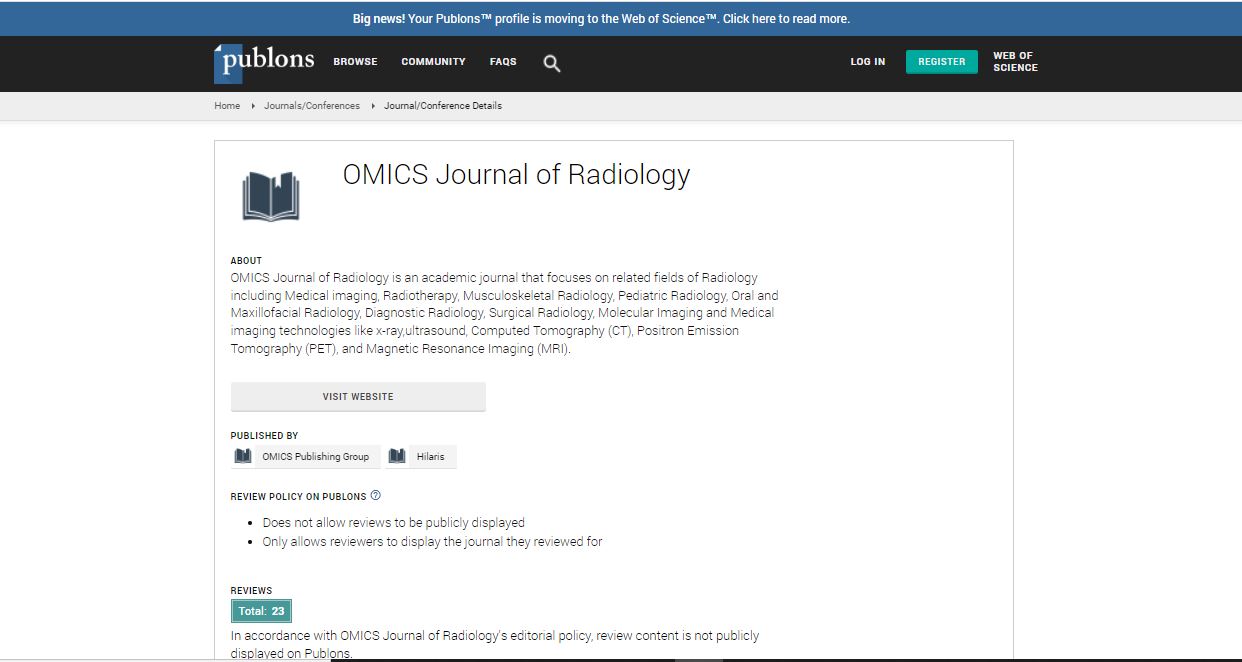Our Group organises 3000+ Global Conferenceseries Events every year across USA, Europe & Asia with support from 1000 more scientific Societies and Publishes 700+ Open Access Journals which contains over 50000 eminent personalities, reputed scientists as editorial board members.
Open Access Journals gaining more Readers and Citations
700 Journals and 15,000,000 Readers Each Journal is getting 25,000+ Readers
Google Scholar citation report
Citations : 551
Journal of Radiology received 551 citations as per Google Scholar report
Journal of Radiology peer review process verified at publons
Indexed In
- Index Copernicus
- Google Scholar
- Open J Gate
- Genamics JournalSeek
- ResearchBible
- Electronic Journals Library
- RefSeek
- Hamdard University
- EBSCO A-Z
- OCLC- WorldCat
- SWB online catalog
- Virtual Library of Biology (vifabio)
- Publons
- Geneva Foundation for Medical Education and Research
- ICMJE
Useful Links
Share This Page
MRI to investigate the complexity of the CSF flows and its interactions with the cerebral blood flows
2nd International Conference on Neuroscience, Neuroimaging & Interventional Radiology
Olivier Baledent
Responsable De LUnite De Traitement De LImage Medicale, France
ScientificTracks Abstracts: OMICS J Radiol
Abstract
The rapid amplitude change of the cerebral systolic arterial input flow increases the brain volume. Then CSF is quickly displaced out of the cranium toward the spinal canal; ICP increase is therefore limited. Nevertheless, this first CSF response is also limited and must be supplemented with the cerebral blood venous outflow. The venous contribution is slower than the CSF but at the end drains from the cranium all the blood input volume. Finally, due to the narrow aqueduct of Sylvius, a small CSF ventricular flows out of the fourth ventricle. Cerebral hydrodynamics knowledge has benefited considerably from the introduction of phase-contrast magnetic resonance imaging (PCMRI), the unique technique to investigate the small but rapid CSF oscillations. Using post-processing software, key parameters of flow can be easily calculated. In ten minutes, CSF flow is quantified in the spinal subarachnoid spaces, the pontine cistern, the foramens of Magendi and the aqueduct of Sylvius. Blood flow is quantified in the internal carotid and the vertebral arteries, straight and sagittal sinus, jugular and epidural veins. These flows data can be functional information├ó┬?┬?s complementary to the morphological imaging to better investigate the cranio-spinal system in case of patients presented with hydrocephalus, chiari malformation, syringomyelia, cerebral hemorrhage, intracranial hyper or hypo tension. The objective of this presentation is to describe the power and the limit of such clinical 2D PCMRI protocol concerning CSF and blood flow investigations and present what we have found in different healthy and pathological populationsBiography
Olivier Baledent did his PhD in the area of Biophysics & Radiology and is currently working as an Assistant Professor in Amiens 'University Hospital in France. He is heading the Medical Image Processing Department and BioFlowImage (www.tidam.fr) research team. After a Master’s degree in Informatics in Amiens, he passed a Post-graduate diploma in the field of Image Processing in Lyon. He passed his PhD in 2001 at Jules Verne University. The thesis subject was already about CSF flow imaging using MRI technique. Now inside Amiens 'University Hospital, with clinicians he continues to develop CSF research and applies non-invasive hydrodynamic approach in clinical practice. He is also Biophysics' Teacher at the Medical School of Amiens

 Spanish
Spanish  Chinese
Chinese  Russian
Russian  German
German  French
French  Japanese
Japanese  Portuguese
Portuguese  Hindi
Hindi 
